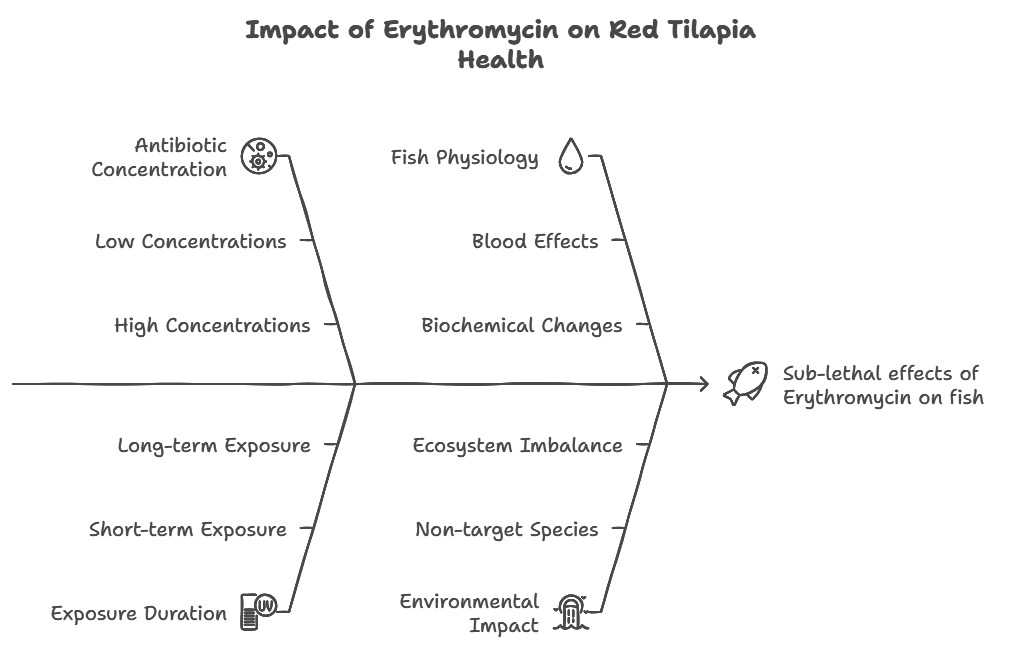
Erythromycin (ERY) is widely used as an antibiotic, leading to its pervasive presence in the environment and potential risks to non-target species. This study investigated the under sub-lethal effects of ERY on Florida red tilapia (Oreochromis sp.) by examining changes in their hematological and biochemical parameters. Over 28 days, fish were exposed to a range of ERY concentrations (0.3, 1.7, 10, 60, and 300 µg/L), with the control group at 0.00 µg/L.
This study demonstrated that exposure to low environmental concentrations and legally permissible aquaculture doses of antibiotics (ERY) (under sub-lethal concentration) can result in blood effects in Oreochromis sp. An exploratory principal component analysis (PCA) was conducted to simplify the data and highlight the most influential factors. The first two principal components accounted for 80.9 % of the variance, indicating strong dataset representation. Subsequent analysis of variance (ANOVA) revealed significant dose-dependent variations in the hematological and biochemical profiles, linking specific bioassays (Aq1 through Aq5) to particular changes in the fish’s physiology. These findings underscore the importance of monitoring antibiotic levels in aquatic environments to safeguard the health of aquatic organisms.
Total file downloads: 20